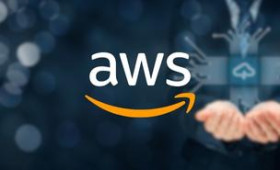AWS
Amazon Web Services (AWS) is a comprehensive cloud computing platform offered by Amazon. It provides a vast array of on-demand services, tools, and infrastructure to help businesses and individuals build, deploy, and manage various types of applications and services in the cloud. AWS offers a scalable and flexible environment, allowing users to access computing power, storage, databases, networking, analytics, machine learning, and more without the need to invest in physical hardware. AWS has become a leader in the cloud computing industry, serving businesses of all sizes, from startups to large enterprises, and enabling them to innovate, scale, and achieve their goals efficiently in the cloud.

Overview
Amazon Web Services (AWS) is a comprehensive cloud computing platform offered by Amazon. It provides a vast array of on-demand services, tools, and infrastructure to help businesses and individuals build, deploy, and manage various types of applications and services in the cloud. AWS offers a scalable and flexible environment, allowing users to access computing power, storage, databases, networking, analytics, machine learning, and more without the need to invest in physical hardware. AWS has become a leader in the cloud computing industry, serving businesses of all sizes, from startups to large enterprises, and enabling them to innovate, scale, and achieve their goals efficiently in the cloud.
Course Description
Fundamentals of Cloud Computing
Ø Introduction to cloud computing
Ø Cloud environment architecture
Ø Cloud computing Models
Identity & Access Management
Ø Creating IAM users and groups
Ø Understanding the IAM Policies
Ø IAM Policy and IAM role
Ø Setting up IAM Security
Ø Creating customer managed policies and deny rules
Infrastructure & Networking
Ø Introduction to Amazon Web Services
Ø AWS Global Infrastructure
Ø Introduction Virtual Private Cloud
Ø VPC & Subnets
Ø Internet gateways, VPC peering & NAT Gateways
Ø IP Addressing in AWS
Ø Understanding AWS security Groups
Ø Understanding VPC endpoints
Elastic Cloud Compute
Ø Launching our first EC2 instance
Ø EC2 instance types & Pricing Models
Ø Instance tenancy
Ø Elastic ip’s use cases
Ø AMI & snapshots
Ø Load Balancers and Target Groups
Ø Autscalling groups, launch template and launch configurations.
Ø Understanding AWS limits
Ø Transferring AMI from one account to another account
Ø Understanding placement groups
Ø Understanding keypairs backend
Storage
Ø Introduction to block & Object storage mechanism
Ø Introduction to Elastic Block Store-EBS
Ø EBS Snapshots
Ø EBS Volume Types
Ø Instance Store Volumes
Ø Introduction to Simple Storage Services(S3)
Ø Features of S3
Domain Name System
Ø Introduction to DNS
Ø Understanding DNS Records
Ø Introduction to Route53
Ø Creating hosted zones and record sets
Ø Understanding routing policies in depth
AWS lamnda
Ø Getting started with AWS Lambda
Ø Setting up triggering points
Building Scalable Applications & Notification Services
Ø Introduction to message Broker
Ø Understanding SQS
Ø Understanding Simple Notification Services(SNS)
Ø Understanding AWS SES
AWS Developer tools
Ø AWS code commit
Ø Code build
Ø Code deploy
Ø Code pipeline
Relational Databases
Ø Understanding RDS
Ø Creating RDS instance
Monitoring
Ø Understanding CloudWatch
Ø Auditing AWS environment with CloudTrail
Logging
Ø Elasticsearch Kibana
Ø AWS CloudWatch
Source code review
Ø SonarQube
Course Key Features
Ø Classroom and Online Training
Ø IT Experts as Trainers
Ø Industry Curriculum
Ø Real Intensive -Time use cases and Projects
Ø One to One with mentor
Ø Convenient Training schedules
Ø Per Day 8 Hours Lab support
Ø Pre-Assessment Questions
Ø Course Material
Ø Swhizz Certification is valid for lifetime
Ø Resume Building
Ø Interview Guidance
Ø Mock Interview
Ø Drives with Top companies
Ø Internship Opportunities
Ø Tie up with 50+ clients
Who Should Attend
· Graduates
· Post Graduates
· Career Gap people
· Software Developers
· Operations Professionals
· Quality Assurance Engineers
· System Administrators
· IT professionals
· Associates


